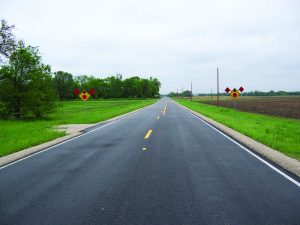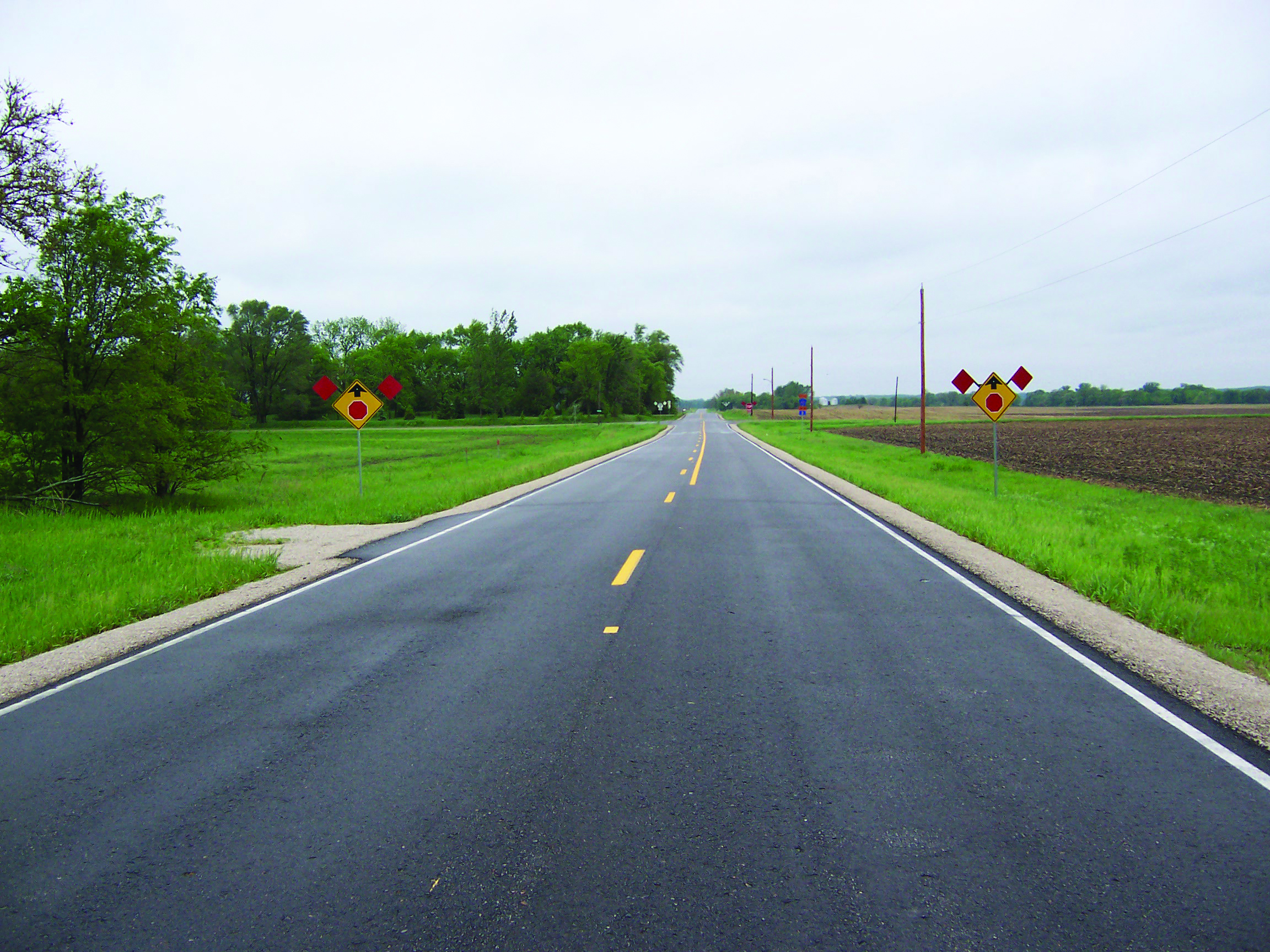Iowa State transportation engineering faculty hit high gear analyzing highway safety data in part two of second Strategic Highway Research Program (SHRP2)

This semester will be busy, as Iowa State University (ISU) researchers propose traffic safety models for SHRP2, or the second Strategic Highway Research Program.
“This is all about saving lives,” says Sandra Larson. Larson (B.S.CE’88) is director of the Iowa Department of Transportation’s (Iowa DOT) Systems Operations Bureau. The Iowa DOT is a strategic partner with ISU’s Institute for Transportation (InTrans), especially when it comes to keeping drivers safe on the roads.
“To significantly reduce the fatalities and major injuries that occur on our highway system, we need to understand more about the drivers and driving behaviors on our roads,” Larson says. “The SHRP2 Safety program will provide that understanding.”
ISU SHRP2 projects deal with pressing safety issues like rural intersection crash risk, driver behavior, and driver/roadway characteristics during crash or near-crash situations. In this second phase, researchers will tackle the challenge of forming traffic models that can accurately predict the success of various safety measures.
Dr. Omar Smadi is an associate professor at ISU’s Department of Civil, Construction and Environmental Engineering (CCEE) and one of the lead researchers for ISU SHRP2 projects.
“It’s a matter of getting the data, assembling your research questions and then figuring out if you have enough data to develop a statistical model that looks at the relationship between driving behavior and independent variables of roadway characteristics,” Smadi says.
Smadi is the principal investigator (PI) of “Use of SHRP2 NDS Data to Evaluate Roadway Departure Characteristics.” InTrans Director and CCEE Professor Dr. Shauna Hallmark is the PI for “Evaluation of Work-Zone Safety Using SHRP2 Naturalistic Driving Study Data.” She is also the PI for “Research Utilizing the SHRP2 Safety Data to Support Highway Safety,” a project that involves Smadi and CCEE Associate Professor Dr. Peter Savolainen as co-principal investigators. Savolainen is leading “Speed Limits, Geometry, and Driver Behavior,” with Smadi as a Co-PI. The team consists of several more CCEE researchers as well, including Dr. Anuj Sharma. Read more about their research.
The Transportation Research Board of the National Academies (TRB) administers SHRP2. It characterizes the program as designed to improve highway safety, reduce roadway congestion, and improve methods for renewing roads and bridges. Authorized by Congress in 2006 in partnership with the Federal Highway Administration (FHWA) and the American Association of State Highway and Transportation Officials (AASHTO), SHRP2 projects fall into four categories: safety, infrastructure renewal, reliability, and capacity.
During the initial phase of SHRP2, ISU was awarded three safety projects. In 2016, ISU researchers were again granted three projects for SHRP2’s second phase. Those researchers hope their safety models can help both state departments of transportation (DOTs) as well as local and county roadway officials. However, before models can be implemented and validated in the field by DOTs in states like Iowa, Minnesota and Michigan, each ISU SHRP2 project must be presented to the FHWA and the AASHTO Safety Task Force. The group will make a decision on additional funding for implementation (Phase III). Presentations for this third implementation phase will occur in May.
Prior to presentations in May, Smadi, Hallmark and Savolainen (along with teams of researchers and graduate students) will analyze massive amounts of data from SHRP2’s Naturalistic Driving Study, or NDS, and the accompanying Roadway Information Database, or RID. Data will be coming from sources like the Center for Transportation Research and Education (CTRE), the Virginia Tech Transportation Institute, and past projects conducted by CCEE/InTrans researchers.
“We want to reduce crashes, we want to reduce fatalities, we want to reduce serious injuries,” Smadi says. “Of course, to be able to do that, you have to invest your resources wisely. This is giving a tool to the safety engineers.”
Larson, who is currently vice chair of the AASHTO SHRP2 Safety Task Force, sums up the impact of the work.
“Iowa is one of the go-to states for cutting-edge safety research because of the work InTrans has done and is doing at ISU, and specifically through the SHRP2 program,” she says.
